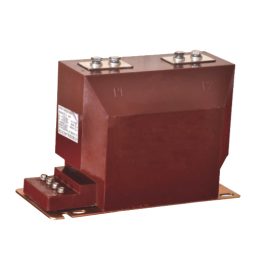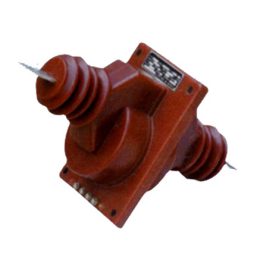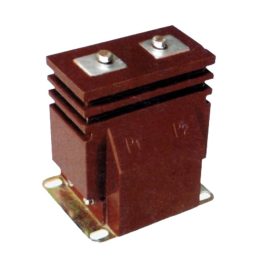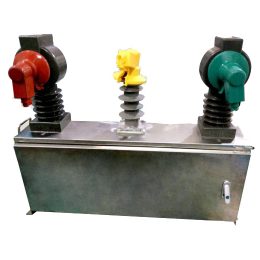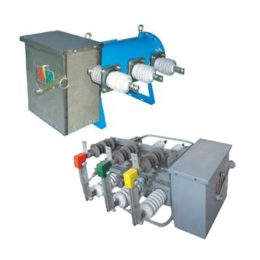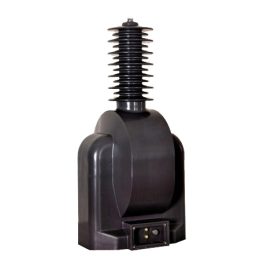Phân Tích Các Vấn Đề Thường Gặp Của Máy Biến Áp Dòng Trong Các Hệ Thống Điện
Abstract
To ensure the safe and economical operation of power systems, it is essential to monitor and measure the operating status of electrical equipment. For safety, measuring and protection devices are indirectly connected to the system via current transformers (CTs). This article analyzes common issues encountered with current transformers in power systems, identifies their causes, and proposes solutions to maintain system stability.
Function of Current Transformers
To ensure the safe and economical operation of the power system, monitoring and measurement of electrical equipment are crucial. However, standard measuring and protection devices cannot directly connect to high-voltage equipment. Instead, CTs are used to proportionally transform large primary currents into smaller, standardized secondary currents (5A or 1A as per national standards).
Additionally, since direct measurement of high-voltage circuits is dangerous, CTs provide both current transformation and electrical isolation. As sensors, CTs convert high primary currents into lower secondary currents, which are connected to measuring instruments and protection devices.
Working Principle of Current Transformers
CTs consist of primary and secondary windings, a magnetic core, insulation supports, and output terminals. The magnetic core is made of laminated silicon steel sheets. The primary winding is connected in series with the main circuit, allowing the measured current I1 to generate alternating magnetic flux in the core, which induces a proportional current I2 in the secondary winding. Neglecting magnetization loss:
I1N1 = I2N2
Where N1 and N2 are the number of turns in the primary and secondary windings, respectively. The transformation ratio K = I1/I2 = N2/N1. Since the primary winding is directly connected to the main circuit, insulation appropriate to the system voltage is required to ensure safety.
Classification of Current Transformers
CTs are classified into:
- Measuring CTs: Used for metering (billing) and measuring current in operational equipment.
- Protection CTs: Paired with relay protection devices to detect faults (e.g., short circuits or overloads) and send signals to disconnect faulty circuits, safeguarding the system.
Usage Precautions for Current Transformers
Correct Polarity Connection: Incorrect polarity affects measurements and can cause short-circuit accidents in parallel connections.
Protective Grounding: Secondary circuits must have a single protective grounding point to prevent high voltages from endangering personnel or instruments if primary-to-secondary insulation fails.
Avoid Open Circuits in the Secondary Circuit: Open circuits can lead to high secondary voltages, overheating, or measurement inaccuracies. It is vital to prevent such occurrences during operation.
Dedicated Circuits: CTs used for energy metering should not be shared with protection devices to avoid mutual interference.
Common Faults and Troubleshooting
Abnormal Operation
CTs may exhibit open circuits, overheating, smoke, abnormal noises, or loose winding bolts. Operators should diagnose these issues based on symptoms, such as:
- Open circuits indicated by zero current readings or non-rotating energy meters.
- High-pitched discharge sounds or burnt terminal boards.
In such cases, immediately take the CT out of service.
Abnormal Noise or Core Overheating
Causes: Overloading, open secondary circuits, insulation failure causing discharge, improper core clamping.
Solutions: Reduce load to rated levels. Correct secondary circuit issues. Replace CTs with damaged insulation.
Secondary Circuit Open Circuit
Symptoms: High secondary voltage (several kilovolts). Discharge sparks and sounds at the open circuit point. Magnetic core overheating.
Solutions: Power down and resolve the open circuit promptly. If not feasible, reduce primary load and short the secondary circuit with insulated tools under supervision.
Maintenance and Inspection of Current Transformers
- Regularly check for overheating, unusual sounds, or burnt smells.
- Inspect insulation, clean porcelain parts, and ensure no oil leaks for oil-filled CTs.
- Test insulation and oil quality periodically.
- Ensure proper grounding and avoid open circuits in the secondary circuit.
Ensuring the safe and stable operation of power systems requires adherence to safety and technical guidelines during equipment maintenance and operation. Promptly addressing abnormalities enhances equipment reliability and efficiency.
- Xử Lý Lỗi của Máy Biến Áp Điện: Chẩn Đoán và Giải Pháp
- Nhiệt Độ Bất Thường Trong Máy Biến Áp Dòng 10KV: Nguyên Nhân, Hệ Quả và Giải Pháp
- Các sự cố phổ biến và sửa chữa lỗi của biến áp dòng điện
- Ảnh Hưởng Của Saturation Trong Máy Biến Áp Dòng Đến Bảo Vệ Máy Biến Áp và Bảo Vệ Dòng Điện
- Phân Tích Các Vấn Đề Thường Gặp Của Máy Biến Áp Dòng Trong Các Hệ Thống Điện
- Máy Biến Áp Dòng Dòng Không (ZCT): Bảo Vệ, Lắp Đặt và Ứng Dụng
